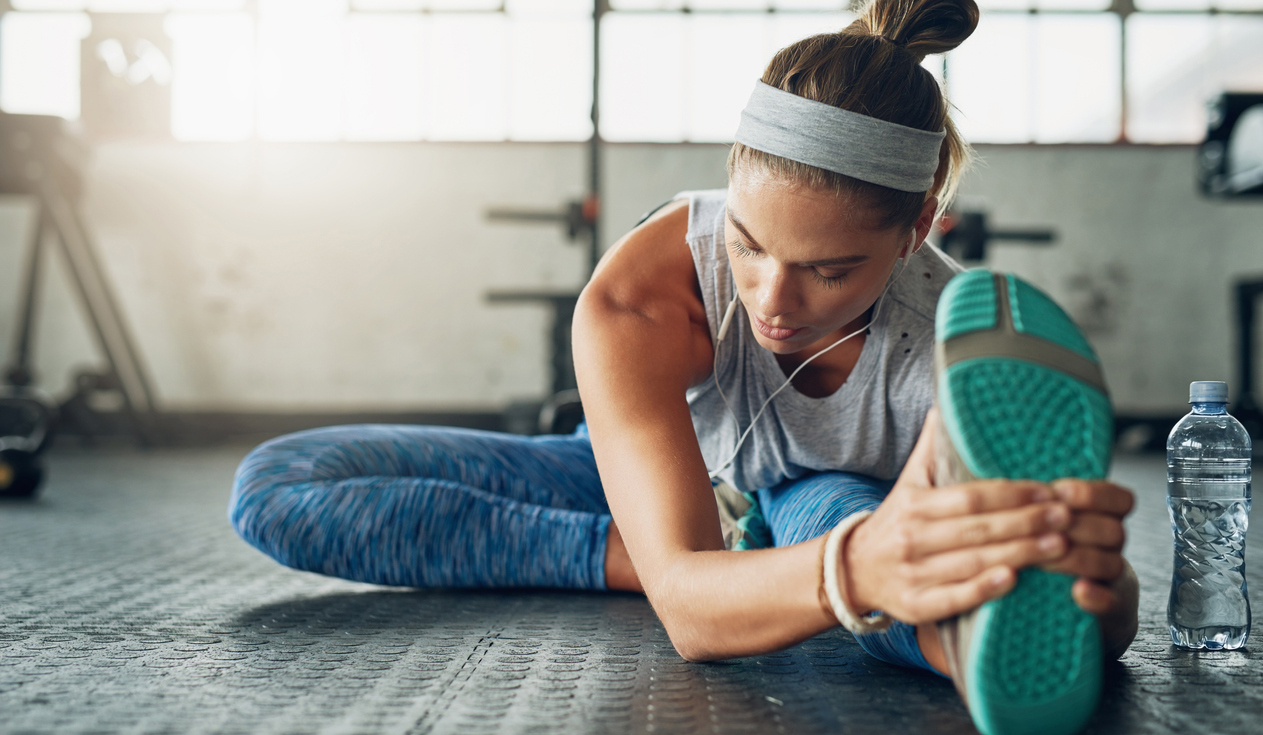Fix Hip Flexibility Problems With This Simple Exercise
The hip flexors are one of the most common areas of tightness and dysfunction in both high-performance athletes and the general fitness population. Comprised of both superficial and deep layers of musculature—including the rectus femoris quadriceps, the iliacus and the psoas—this group of muscles, responsible for primary hip flexion, often becomes functionally shortened in static positions such as prolonged sitting.
This can cause a number of problems—poor posture, improper exercise form, back pain and poor sprinting form, to name a few.
To help reverse the negative effects of the chronic seated position while facilitating transferable mobility into hip extension, try the Rear-Foot-Elevated Hip Flexor Dynamic Stretch. It one of the most effective methods of simultaneously bulletproofing your body and improving performance.
This movement is simple, but to receive the maximum benefits in performance and mobility, you need to focus on perfect set-up and execution. Here are a few key points to improve your technique and help you get the most out of this movement:
1. Set up on a weight bench approximately as high as the bottom of your knee cap. If the bench is too high, use a pad under your back knee to raise yourself up. Place the front crease of your ankle on the bench while bringing your opposite leg out in front of you in a half-kneeling position.
2. The position and stabilization at the core are key. Be sure that your pelvis is in a neutral position, not tiled forward or backward. Next, turn on your core musculature and create a stable base of support throughout your abs, obliques and lower back. Think about exerting 25 percent of maximal tension through the core. Finally, tense your glute on the back leg. This will create a stretch right away down the front side of your leg in your hip flexor area.
3. Once you are in perfect set-up with the correct stabilization and position at the pelvis, core and glute, place both hands on your front knee, which should be bent at approximately 90 degrees. From there, use an oscillatory movement, back and forth, to put a stretch through your hip flexors—then back off the stretch slightly.
4. Rhythm and range of motion are important. You want a smooth back and forth motion of 1 to 2 inches of your knee driving straight ahead. While this movement is used, your pelvis, core and glute stay in position and contract with tension throughout.
5. Once the oscillations start, stay there for 1 to 3 minutes, making sure to complete the dynamic stretch on both sides. If you are training and sitting several days a week, perform this dynamic stretch 2 or 3 times per side throughout the day. The more, the better. This stretch combats the poor positions you are currently in at work or school.
[cf]skyword_tracking_tag[/cf]RECOMMENDED FOR YOU
MOST POPULAR
Fix Hip Flexibility Problems With This Simple Exercise
The hip flexors are one of the most common areas of tightness and dysfunction in both high-performance athletes and the general fitness population. Comprised of both superficial and deep layers of musculature—including the rectus femoris quadriceps, the iliacus and the psoas—this group of muscles, responsible for primary hip flexion, often becomes functionally shortened in static positions such as prolonged sitting.
This can cause a number of problems—poor posture, improper exercise form, back pain and poor sprinting form, to name a few.
To help reverse the negative effects of the chronic seated position while facilitating transferable mobility into hip extension, try the Rear-Foot-Elevated Hip Flexor Dynamic Stretch. It one of the most effective methods of simultaneously bulletproofing your body and improving performance.
This movement is simple, but to receive the maximum benefits in performance and mobility, you need to focus on perfect set-up and execution. Here are a few key points to improve your technique and help you get the most out of this movement:
1. Set up on a weight bench approximately as high as the bottom of your knee cap. If the bench is too high, use a pad under your back knee to raise yourself up. Place the front crease of your ankle on the bench while bringing your opposite leg out in front of you in a half-kneeling position.
2. The position and stabilization at the core are key. Be sure that your pelvis is in a neutral position, not tiled forward or backward. Next, turn on your core musculature and create a stable base of support throughout your abs, obliques and lower back. Think about exerting 25 percent of maximal tension through the core. Finally, tense your glute on the back leg. This will create a stretch right away down the front side of your leg in your hip flexor area.
3. Once you are in perfect set-up with the correct stabilization and position at the pelvis, core and glute, place both hands on your front knee, which should be bent at approximately 90 degrees. From there, use an oscillatory movement, back and forth, to put a stretch through your hip flexors—then back off the stretch slightly.
4. Rhythm and range of motion are important. You want a smooth back and forth motion of 1 to 2 inches of your knee driving straight ahead. While this movement is used, your pelvis, core and glute stay in position and contract with tension throughout.
5. Once the oscillations start, stay there for 1 to 3 minutes, making sure to complete the dynamic stretch on both sides. If you are training and sitting several days a week, perform this dynamic stretch 2 or 3 times per side throughout the day. The more, the better. This stretch combats the poor positions you are currently in at work or school.












